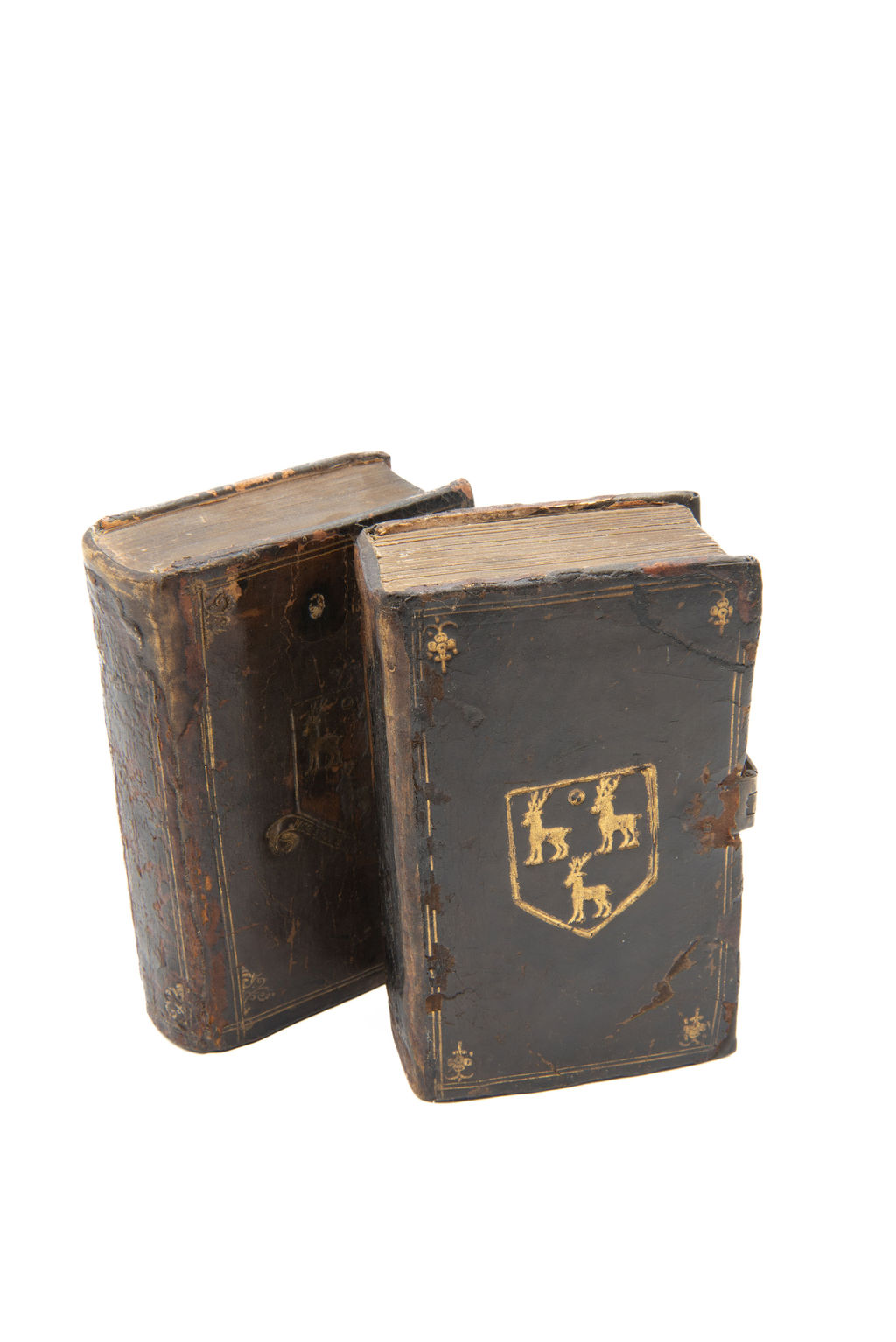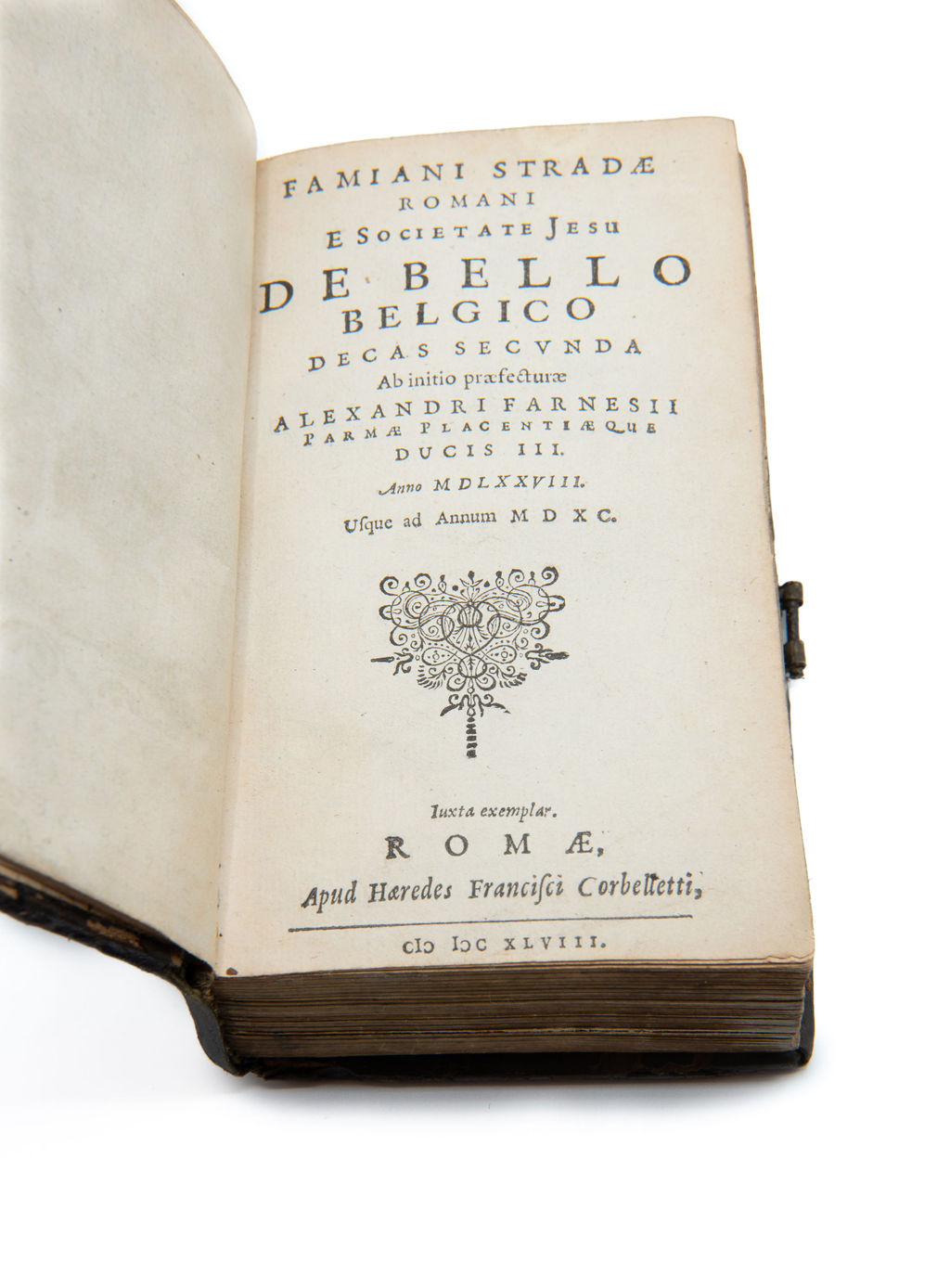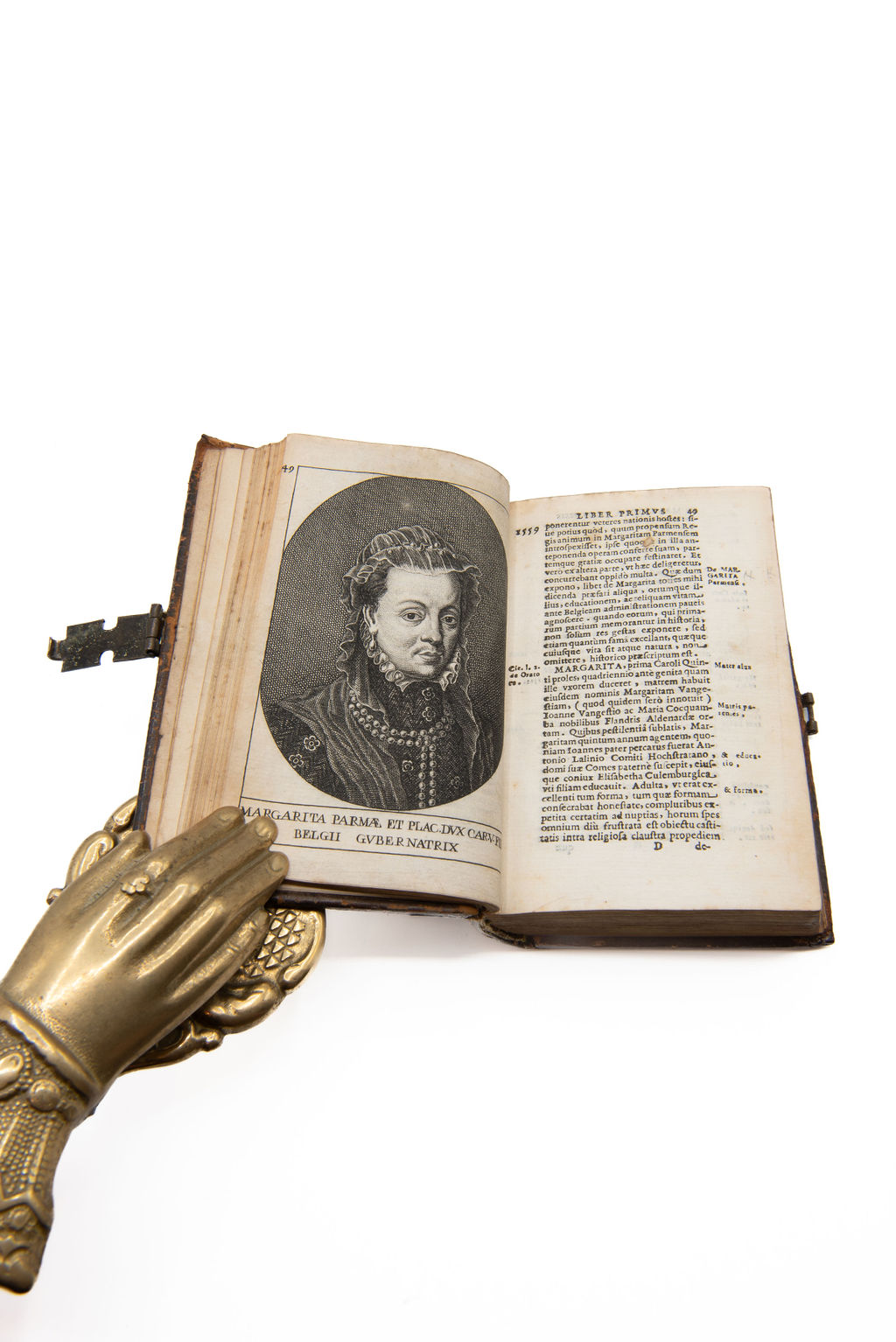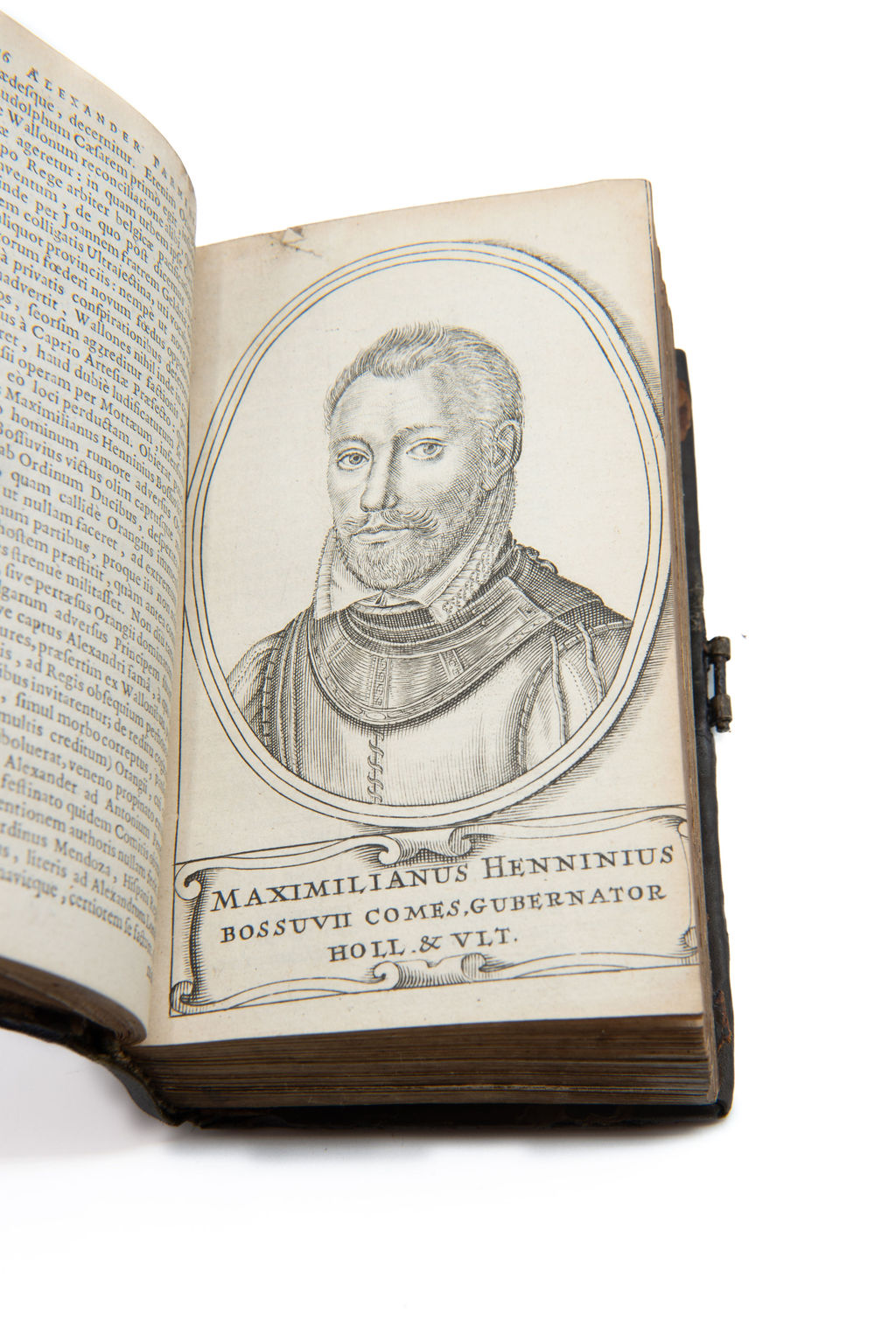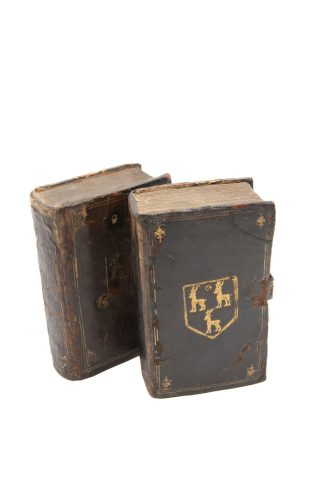STRADA, Famiano.
De Bello Belgico.
Rome, apud Haeredes Francisci Corbelletti, 1648£2,500.00
Two vols. 12mo. Pp. (xvi) 724 (cxl); (xiv) 642 (lxxxviii). Roman letter. First vol contains engraved frontispiece with Minerva in arms, flags with coats of arms behind and 13 engraved full-page portraits of, amongst others, Charles V, Dudley, Earl of Leicester, Margarita Parmae and Queen Elizabeth I. Contemp. bibl. mark to lower tp. Second work contains 11 plates, most notably the Leo Belgicus, which shows the Low Countries in leonine form as well as portraits inc. Maurice of Nassau, Alexander Farnesius and Maximilianus Henninius. Bookplates of Edwin Wilkins Field (1804-1871). General light yellowing, occasional marginal foxing. Good clean copies in contemp. calf, gilt armorial crest on covers of Gilbert Watts (1590-1657), original engraved metal clasps. Restored at head and tail of spine and some joints and corners. Aeg.
Handsomely bound two volumes of Famiano Strada’s (1572-1649) account of the Dutch Revolt from Spain. The vols are exceptional for their many exquisite full page engravings, especially the Leo Belgicus in Vol II, where the Low Countries are depicted in the form of a lion. This is based on the original 1583 Eytzinger form with the lion standing facing right with a paw raised and holding a shield. The lion features heavily on the coats of arms of both Netherlands and Belgium and the depiction was a powerful byword for patriotism during the war in the Low Countries. The portraits are excellent likenesses of important figures from both sides.
Famiano Strada was a Jesuit historian and moralist who taught at the Collegio Romano of the Jesuits in Rome. This work was commissioned by Ranuccio I Farnese in 1595 and was written with the assistance of Alexander Farnese (1545-1592). It was first published in 1632 and translated into Dutch in 1646. The book evocatively describes the scents and colours of the battle between the Spanish troops led by the Duke of Parma and the Dutch troops led by the Staten-Generaal van Willem van Oranje. In 1579 the northern provinces had established their independence as the United Provinces of the Netherlands, leaving the south under Catholic control as the Spanish Netherlands; at the time this work was first published the war with Spain was still continuing. It was only in the year this edition was produced, 1648, at the end of the Thirty Years War, that Spain recognised Dutch independence. The work was criticised by the Dutch for its pro-Spanish stance. Strada defended himself by stating that the supporters of Orange did not fight for religious conviction but merely defended the material interests of the secular nobles.
These volumes were handsomely bound for Gilbert Watts. Born in Yorkshire, the son of Richard Watts of Barnes Hall, Watts the younger attended Lincoln College, Oxford before becoming Rector of Willingdale Doe, Essex, in 1621. He produced an English translation of Bacon’s De augmentis scientiarum in 1640 entitled ‘Of the advancement and proficiencie of learning’ (STC 1167). Watts bequethead his library to Lincoln College – “soe many bookes as cost mee threescore pounds”, to be selected by Bodley’s librarian Thomas Barlow. The armorial binding on these volumes is typical of his collection, which were often bound in dark brown calf with gilt edges.
Edwin Wilkins Field (1804-1871) was a prominent English lawyer and painter who was a passionate advocate for chancery reform. Field also worked to establish artistic copyright through the Fine Arts Copyright Act of 1862. He was buried in Highgate Cemetery and a statue of him stands in the Royal Courts of Justice.
Graesse VI, p. 507; BM STC It. Vol II 880.In stock


